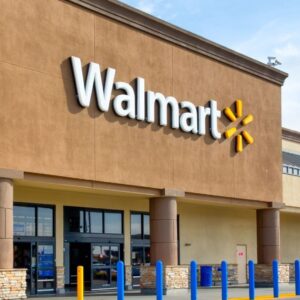
Insights
Why should merchants consider implementing a Buy Now, Pay Later (BNPL) solution?
Affirm, Sezzle, PayPal, Klarna, Zip (previously QuadPay), Afterpay. These names have grown familiar to consumers as Buy Now, Pay Later (BNPL) emerged as a new payment method of choice. The opportunity to purchase products and pay them off over time has proven as attractive to Millennials and Gen Zers, or Zoomers, as credit cards or layaway programs were for preceding generations.
Clint Cady, Partner at W. Capra Consulting Group, weighed in on this emerging trend: “Buy Now, Pay Later opens the door to a whole new set of consumers that many companies previously did not have access to. If you ask a 24-year-old to pay $600 for a designer handbag, they balk. If you tell them they can pay the same $600 off over an 8-week period, all of a sudden you have their attention.”
BNPL can be viewed as an extension of the consumer credit card programs that emerged in the late 1980s, but with a unique upside for merchants. “Credit cards are historically bank-issued programs that don’t benefit merchants,” Cady said. “They allow consumers to transact and provide access to a broader consumer base, but merchants aren’t funded for the purchase immediately. In contrast, BNPL companies help expand the available consumer base, but they adopt the risk themselves by funding the purchase to the merchant immediately and allowing the consumer to pay them back over time.”
On top of expanding the consumer base, BNPL, in many cases, can increase basket size. Cady explained, “If a customer has to cover their whole purchase today, they might only be willing to pay $65. But if you tell them they can pay $62.50 per week for 8 weeks to cover a $500 order, the conversation changes.”
Financial industry heavyweights are recognizing BNPL’s appeal. Square, PayPal, and Mastercard have all made large acquisitions in this space recently. “They see the value in what these companies bring to the table,” Cady said.
Adding BNPL as a payment option may seem like a no-brainer for merchants, but implementation can be challenging. Many leading gateway and acquiring providers have already built integrations for some of the BNPL frontrunners, which can simplify implementation. But if your provider hasn’t built these integrations, implementation can become more costly and challenging. Cady explained, “Building your own BNPL solution, migrating to a new gateway provider, building an integration between your gateway provider and a BNPL provider—these are all possibilities, but each comes with its own set of challenges.”
Cady continued, “W. Capra has helped merchants evaluate and/or integrate BNPL to their payment ecosystem, and we have the battle scars to prove it. We can say for certain that having a helping hand to break down costs, analyze uplift, and manage the implementation process is critical to a successful BNPL implementation.”
Clint Cady is dedicated to helping W. Capra clients to enhance their consumer payment options and successfully implement payment operations solutions. For further discussion, contact Clint at ccady@wcapra.com.
Related Insights
Prepping for the End of Year, Holidays, and 2025
As each year ends, merchants are forced to deal with the scramble related to holiday season sales and offers which […]
Is Walmart’s Real-Time Payments Offer Going to be a Market Mover?
It was recently announced that Walmart will be working with Fiserv to implement real-time payments for their customers using Fiserv’s […]
Visa Sued for Monopolizing Debit Markets
While the ghost of the “Credit Card Competition Act of 2023” still lurks in Congress, the US government furthered […]
The Future of PCI DSS Scoping and Segmentation: What’s Changed?
Addressing Modern Network Challenges with PCI Security Standards Council’s New GuidelinesWritten by Josh Kennedy, W. Capra Senior PCI Consultant […]
Want to stay in touch? Subscribe to the Newsletter











